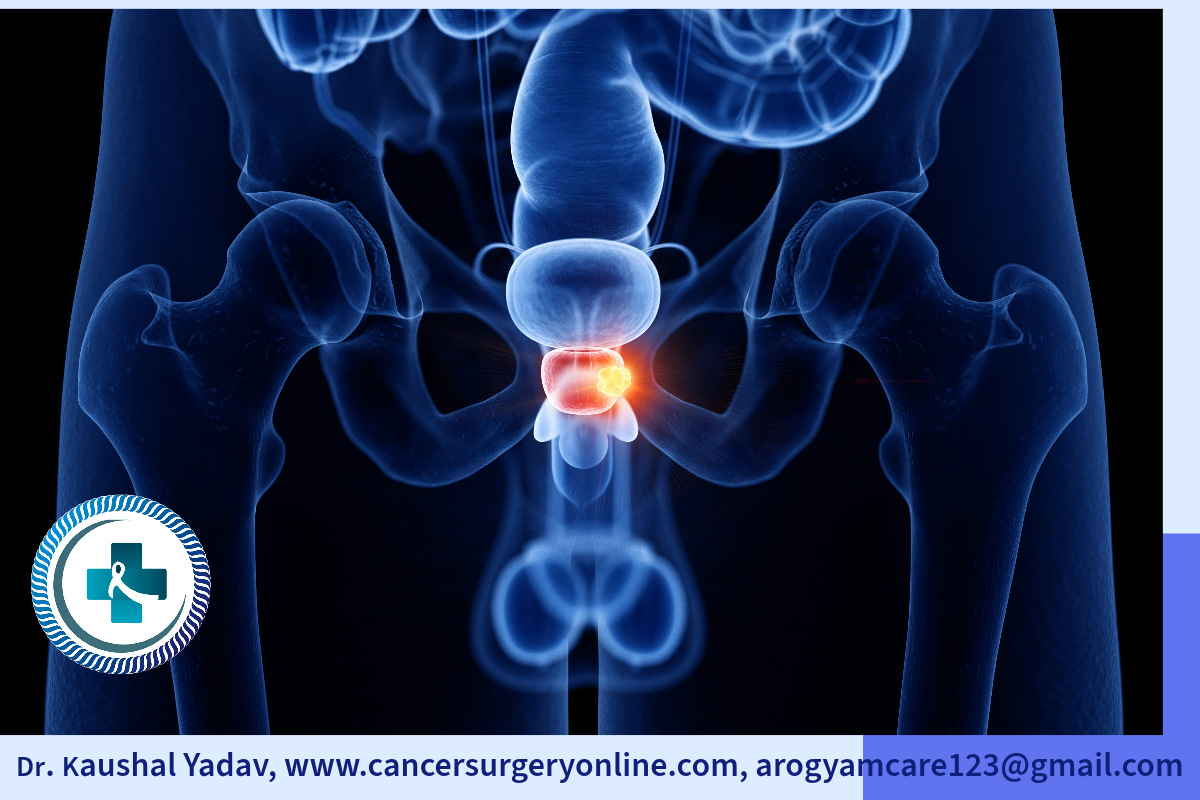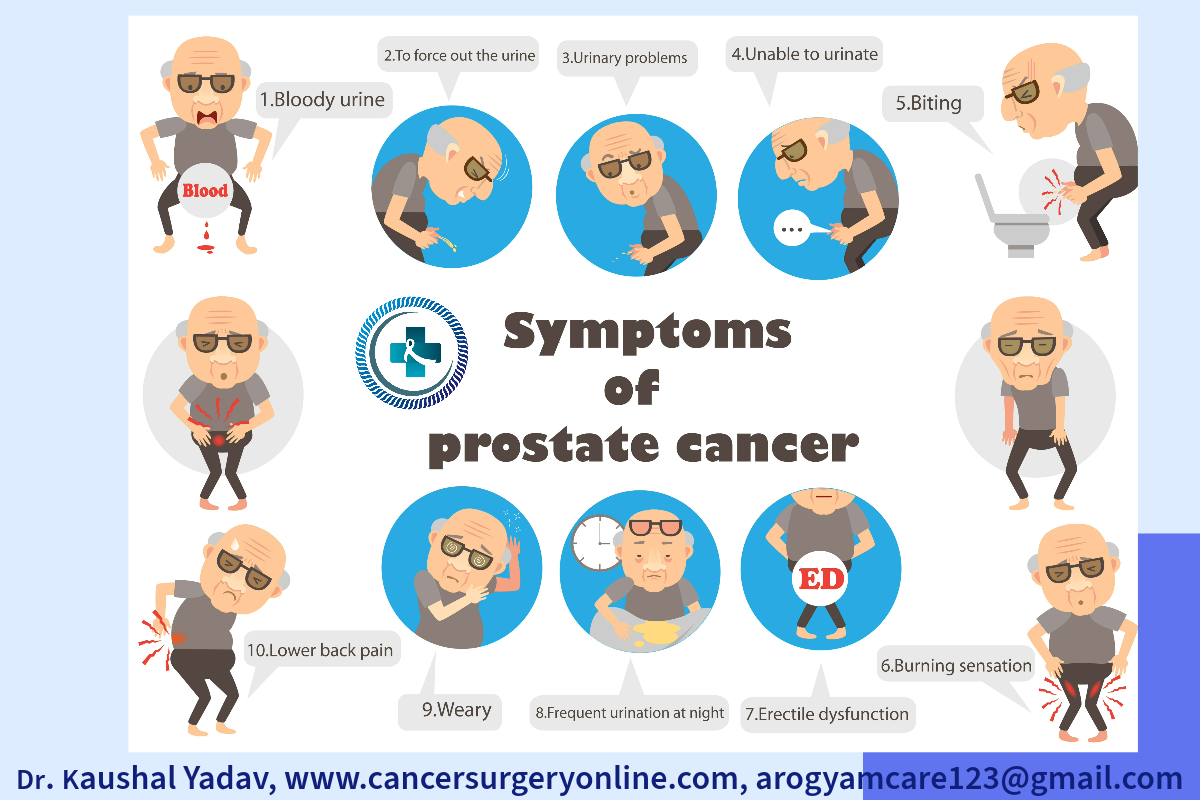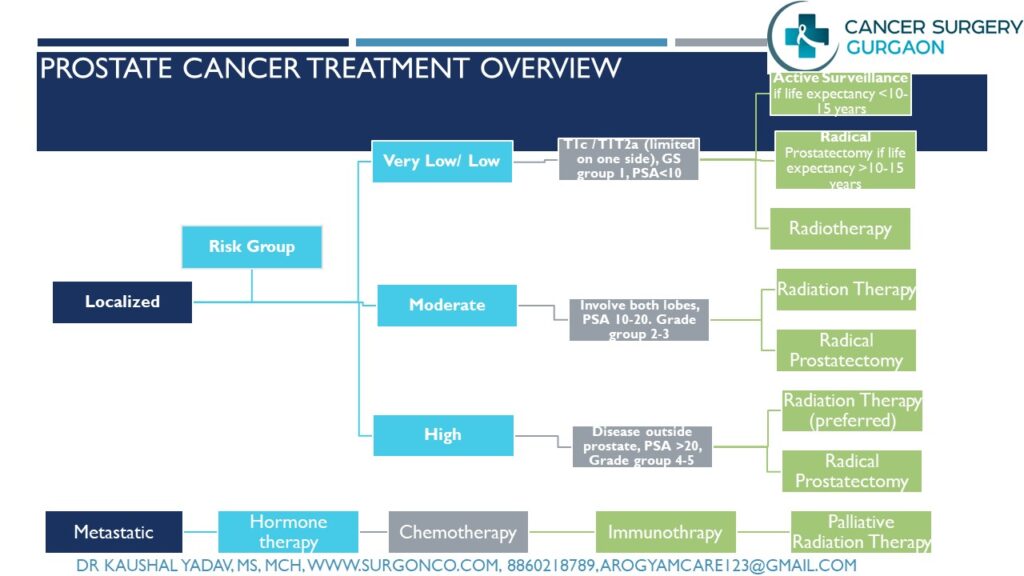Prostate Cancer
Prostate gland is part of the male reproductive system. It is walnut shaped organ situated directly below the urinary bladder. Prostate surrounds the urethra which is passage for both urine and semen. It produces the seminal fluid that nourishes and transports sperm.
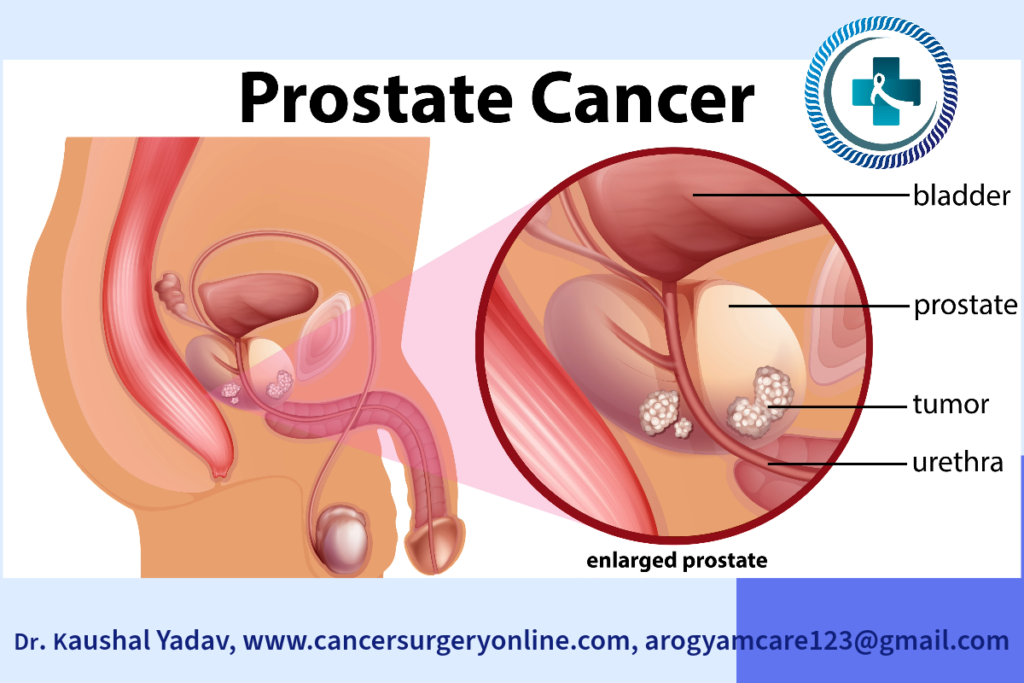
- Prostate cancer is fourth most commonly diagnosed cancer and 7th most common cause of cancer related deaths globally.
- Prostate cancer is most common cancer of men.
- Approx 12.9% of men will be diagnosed with prostate cancer in their lifetime.
Types
- Adenocarcinoma: most common type
- Small Cell Carcinoma: rare and aggressive subtype.
- Neuroendocrine Tumors: extremely rare
- Sarcomatoid Carcinoma: rare type with poor prognosis.
Risk Factors
- Age: more common in older men after the age of 50.
- Family History: especially in close relatives like a father or brother, can increase the risk.
- Race/Ethnicity: African-American men have a higher risk of prostate cancer than men of other racial or ethnic backgrounds.
- Genetics: Mutations in certain genes, such as BRCA1 and BRCA2, may increase the risk of prostate cancer.
- Diet: A diet high in red meat, high dietary fat and low in fruits and vegetables increases the risk.
- Obesity: obese men may have a higher risk of developing aggressive prostate cancer.
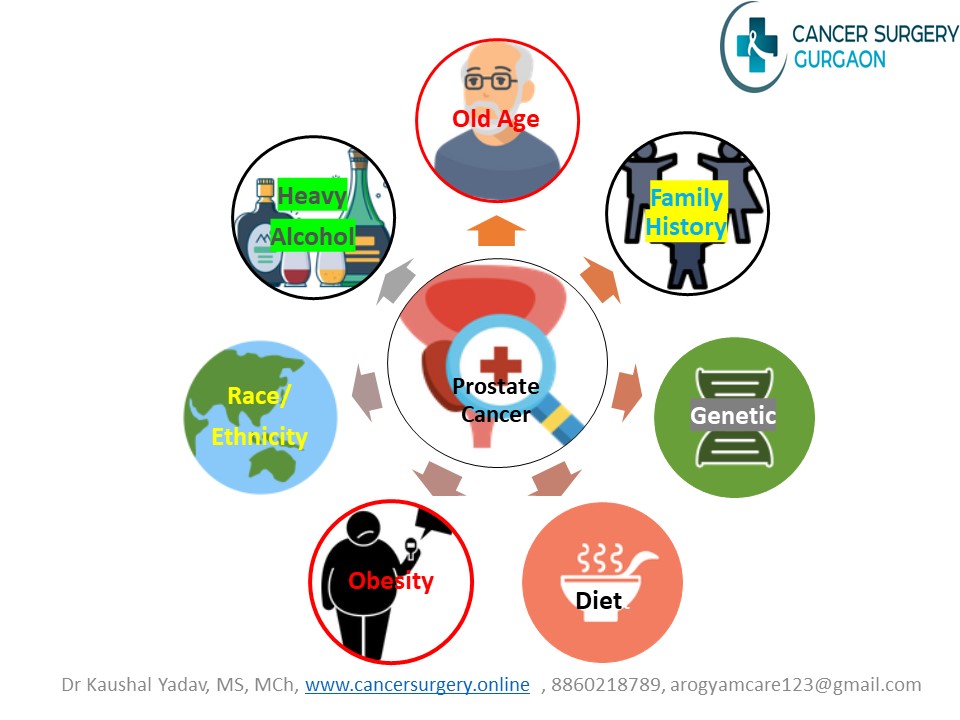
*Diet rich in fruits, vegetables, and whole grains, fibers and that limits or avoids red and processed meats and high fatty diet lowers risk.
Screening for Prostate Cancer:
Methods of screening for prostate cancer includes:
- Prostate-specific antigen (PSA) test: This is a blood test that measures the level of PSA, a protein produced by the prostate. A high PSA level may indicate prostate cancer or other conditions that affect the prostate.
- Digital rectal exam (DRE): This is a physical exam in which a doctor inserts a gloved finger into the rectum to feel the prostate for any lumps or abnormalities.
Biopsy: If any abnormality is found biopsy is advised to confirm the diagnosis.
Usually recommended at 55 years, once in a year with shared discussion between doctor and patient.
Alarmimg Signs & Symptoms of Prostate Cancer
Investigations
- Blood Investigations: Prostate-Specific Antigen (PSA) Test. high PSA level is not specific for prostate cancer, but it may prompt further evaluation.
- Prostate Biopsy: A biopsy is the definitive diagnostic test for prostate cancer. It involves the removal of small tissue samples from the prostate gland for examination under a microscope. A transrectal ultrasound (TRUS) or MRI-guided biopsy may be performed to target specific areas of concern. Gleason score and grades are calculated on biopsy specimen.
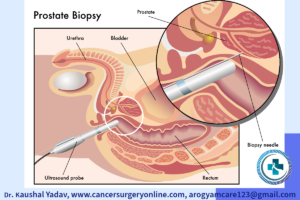
- Imaging Tests:
- Transrectal Ultrasound (TRUS): TRUS uses sound waves to create images of the prostate gland and guide biopsy procedures.
- Multiparametric MRI (mpMRI):** mpMRI provides detailed images of the prostate, helping to locate suspicious areas.
- CT Scan/ PET Scan/ Bone Scan: A CT scan may be used to assess whether cancer has spread to nearby lymph nodes or other organs.
Treatment
Surgery: Radical Prostatectomy: Treatment of choice in early stage physically fit patients with good life expectancy. A radical prostatectomy involves the surgical removal of the entire prostate gland and some surrounding tissues, including the seminal vesicles. The goal of this procedure is to remove the cancerous tissue and, in some cases, nearby lymph nodes. There are several approaches to performing a radical prostatectomy which includes:
- Open Radical Prostatectomy: An incision is made in the abdomen to access the prostate. Open nerve sparing radical prostatectomy is standard surgery with which other approaches are compared for oncology outcome and return of urinary control/ continence and other functions.
- Robotic-Assisted Laparoscopic Surgery: A minimally invasive approach using small incisions and a robotic surgical system to perform the procedure with enhanced precision and minimal scarring.
- Laparoscopic Surgery: Similar to robot-assisted surgery, difference is that instruments are used directly by surgeon without using robotic arms.
Possible Outcomes and Side Effects: significant cancer control when the cancer is localized. – Potential side effects of prostate surgery may include:
- Erectile Dysfunction: Difficulty achieving or maintaining erections, which can often improve over time.
- Urinary Incontinence: Temporary or long-term issues with urinary control, which may improve with pelvic floor exercises. This complication is least with nerve sparing approach.
- Bowel and Bladder Problems: Some men may experience temporary issues with bowel or bladder function immediately after surgery.
To Book Appointment for Cancer Surgery :
Treatment Approach for Prostate Carcinoma
Treatment options for prostate cancer depend on the stage and aggressiveness of the cancer.
- Active Surveillance: regular followup without immediate treatment, suitable for very low risk & low-risk cases in older patients.
- Surgery: Prostatectomy to remove the prostate gland. Suitable in early stage localized disease of physically fit patients.
- Radiation Therapy: Using high-energy beams to target and destroy cancer cells. Both Radiation and therapy and Surgery have good cure rate in prostate cancer. More suitable in high risk advance cases. Treatment decision ideally should be such that patients will be treated with only one modality surgery or radiation therapy.
- Hormone Therapy: Reducing testosterone levels, which can slow the growth of hormone-sensitive prostate cancer.
- Chemotherapy: Administering drugs to kill cancer cells, typically for advanced or aggressive cases.
- Immunotherapy: Boosting the body’s immune response to fight cancer
Got some questions
- If all relavant examination and investigations has been done than plan of treatment is finalized with colon cancer surgeon
- After deciding surgical procedure cost estimate can be taken from billing department or hospital. Clinic or hospital department coordinator will assist in case any help required. +918750587489,
- you can visit nearby hospital for colonoscopy screening as advised in our screening section or you can read various society guidelines like American cancer society, USPTF.
- You can consult us through our online consultation link. https://api.whatsapp.com/send/?phone=918750587489&text=I+am+Looking+for+an+appointment+with+Dr.+Kaushal+Yadav.+Please+Help&type=phone_number&app_absent=0

